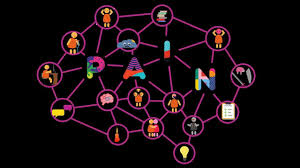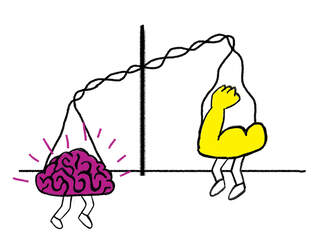|
The understanding of pain has come a long way in the last 20 years and if not longer. Research on the topic has been ground breaking and has allowed us to understand pain and helped us provide better care for our clients. One area of research that is particularly interesting is around pain education and the benefits just knowing and understanding pain can have. Knowing that understanding pain can change the way your pain feels, I wanted to write this blog to give you a quick insight and understanding of some key concepts of pain to help everyone learn. Pain is always real Pain and especially chronic pain is a very complex topic, much more complex than we first thought. You may have heard stories about people who should be in pain but are not and people who should not be in pain but are, just does not make much sense right? Pain is always real, but what the contributing factors driving the pain you feel may differ. A health professional with a good understanding of pain science will never disregard your pain because they can't identify any physical reason for your pain but help you understand what may be causing or amplifying the pain you feel. Pain depends on context Pain is a complex interaction of biological, psychological and social factors. This interaction can include:
These factors that form the context of your pain may amplify or improve the pain you feel. This means the pain you feel can change just by changing the way you think and feel. Believe it or not, people have been found to have a more painful experience when exposed to heat when looking at a red light rather than a blue light because we associate red with danger unconsciously. This means a lot of factors can influence and contribute to your pain however in turn by working on changing these factors you can improve your recovery. Educate yourself on your pain The first step in recovery is to learn about your pain, this helps to understand your health professional when talking about your pain and learning about some common concepts can help you re-engage with physical activity and movement and allow you to have confidence you are not harming yourself. As mentioned previously with all the research that has been done, we now have a better understanding of what can be achieved if you know more about pain and your own pain in particular. Simply understanding pain can change the way it feels. Educating yourself about your pain helps you to be proactive and helps to take ownership of your own recovery which means you are not relying on anyone else to help you make a big difference. Pain does not always equal tissue damage The complex interaction between biological, psychological and social factors helps to understand that many factors contribute to your pain, this also helps us to understand that just because there is pain, does not mean there is tissue damage. In fact, pain is used by the body to prevent tissue damage. There is a large amount of research that has found that many people have some abnormalities on scans but have no pain and that these abnormalities are actually just age related changes. The opposite can also occur where there is pain but no abnormal changes to scans. Even the way you are told about your scans can contribute to your pain. Humans are very strong and have an amazing ability to heal or adapt. The pain experienced may be because of an acute injury or damage to tissues, but our bodies are very capable of healing, and when this pain continuous after healing, the amount of contribution of psycho social factors to the pain experienced becomes greater. When you understand that pain does not equal tissue damage, you become less afraid and more confident to move, retraining your brain system. Pain is there to protect you Pain is a deliberate and vital mechanism of the body to protect you from harm. The body uses pain to help change your behaviour that it thinks is dangerous and therefore protects you from causing any harm. The brain is at the centre of your pain system, the brain gets messages from nerves in your body that we can call “danger detectors”, these danger detectors send information to your brain that the body may be in danger. The brain then takes this information, along with all the relevant psychological and social information it has already stored and makes a decision whether your body is in danger or it is safe. If your brain concludes your body is in danger, it will produce pain in order to change your behaviour to avoid this danger. An amazing fact about the body's pain system is that it can create pain with no physical stimulus or injury. Simple thoughts, past experiences and feelings can create enough evidence of danger for the brain to produce pain. A normal pain system allows a buffer to produce pain prior to any tissue damage occurring big enough so that the injury does not happen but small enough so we don't get pain when we don't need it. This buffer grows bigger as the pain system gets more and more sensitive and overprotective because we feel pain way before our body is in danger. When your body gets over protective Like anything that happens in your body, the pain system learns pain. The more you have lived with pain, the better your pain system is at producing it. When danger messages are sent to the brain it travels to the spinal cord and then to the brain. When this process is repeatedly done, the pain system learns to respond better. This means the pain system is more sensitive and overprotective and the danger messages that are sent to the brain are turned up. When these turned up danger messages reach the brain, the brian is more likely to produce pain. The brain also gets more efficient at producing pain and the brain does not only respond to a sensitive spinal cord but also any sign of danger like from your psychological and social factors that influence pain. Resetting the buffer for your pain system to return to producing pain only when it is truly needed is an important step in getting back to your normal activities. Getting out of this the same way you got into it The reason why the pain system can become overprotective and learn how to produce pain better is because of bioplasticity. Bioplasticity is the scientific meaning of our body’s ability to adapt and thanks to bioplasticity we can retrain the pain system to return to normal. The idea of retraining the pain system starts with understanding and learning about your pain, knowing that it can be sensitive and over protective and simple things like your thoughts, beliefs and past experience can influence the pain you feel. With this knowledge you can then start to move more even when you do get some pain, eventually this movement and new belief can push the buffer of your pain system in the right direction. Resetting the pain system and its buffer takes a lot of time and patience but it is important you stick at it. Each small bit of movement is a win, each small win is remembered by your system and bit by bit you will make progress towards recovery. You are the best weapon against your pain Being proactive, looking for solutions, learning about pain, actively rethinking your own pain, trying new things and doing things for yourself rather than waiting for things to be done for you is the best way for recovery.
Over time you will learn more and more about your pain and what is influencing it, you will learn what the best strategies for recovery are and you will build your own positive experiences that can positively influence your pain experience. Recovery from chronic or long term pain is a journey not a quick fix. Seek the right advice, learn more about what is going on and take control. Izaac Boylan Accredited Exercise Physiologist
0 Comments
Your comment will be posted after it is approved.
Leave a Reply. |
AuthorSLisa Parkinson Archives
July 2024
Categories
All
|





 RSS Feed
RSS Feed